
2015-08 Special 2015
.pdf
SPECIAL 2015
5O |
||||
POSTERS |
||||
The |
greatest |
|||
|
|
in |
||
covers |
||||
|
||||
NME |
history |
|||
|
|
|||
* * *1 3 2 PAG E S * * *
MASSIVE COLLECTORS EDITION
Own a piece of history
The best of
Celebrating the first chapter
1952–2O15
THE PAST, PRESENT & FUTURE OF MUSIC 29 JULY–26 AUG 2015 £3.50 US$9.50 ES€5.35 CN$8.99
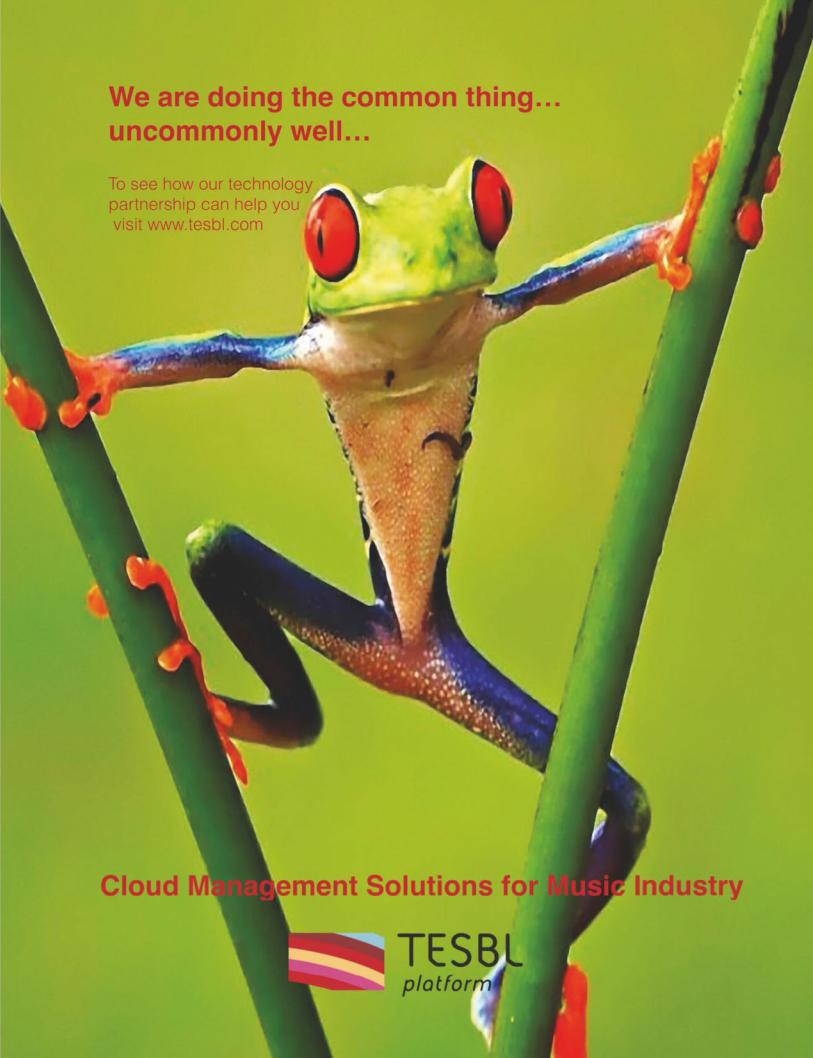
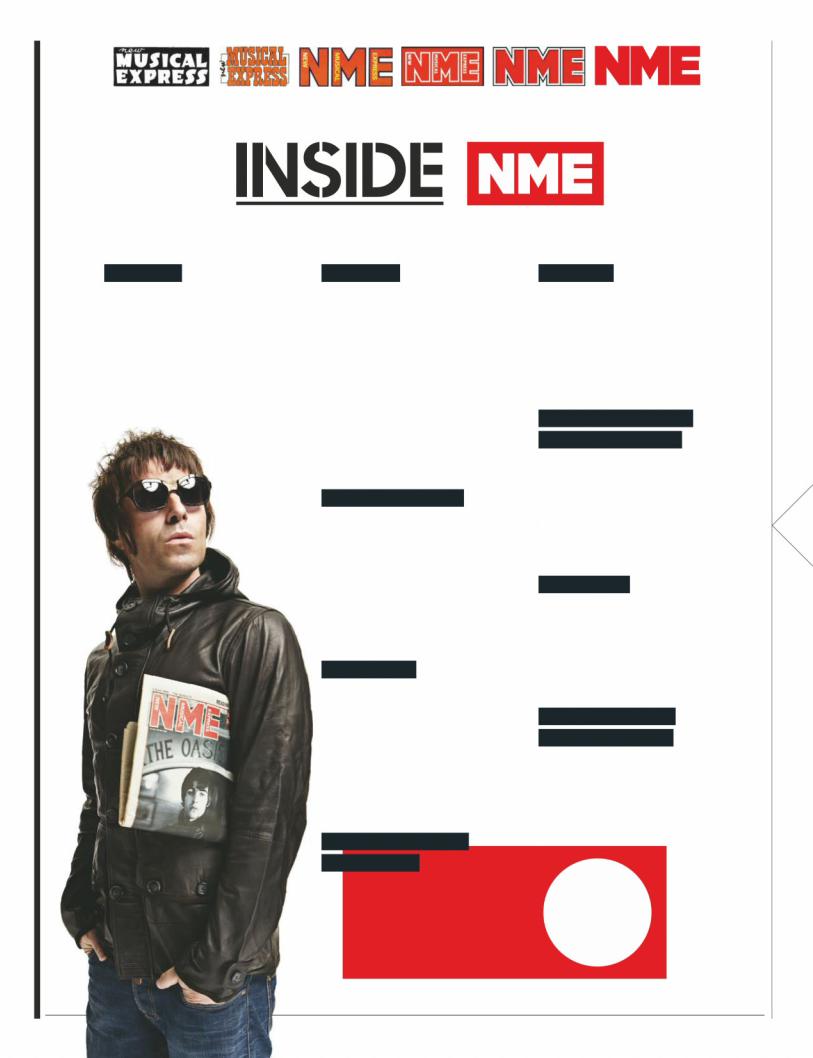
GOODACRE, DENNIS MORRIS, CHALKIE DAVIES, STEVE DOUBLE, ELLIS PARRINDER, PIETER M VAN HATTEM, KEVIN |
CHALKLEY, ZACKERY MICHAEL, EAMONN J MCCABE, TOM OXLEY, ANDREW KENT CONTENTS: DEAN CHALKLEY |
COVER: MARTYN |
CUMMINS, DEAN |
|
NEW MUSICAL EXPRESS | 1 AUGUST 2015 |
4 LETTERS |
6 HISTORY |
Whether it was called From You To Us, Angst, Fanmail or Sounding Off, the NME letters page has always been the place to tell us when we were right, when we were wrong, and why we should give
you a job – and that’s just Morrissey. Read his many missives and
other entertaining celebrity communiqués here.
As NME prepares to make its great leap into the future, we look back over 63 years of the world’s finest music magazine, from its origins as a Tin Pan Alley jazz mag to the bicep-troubling bumper issue you hold in your hands now. In the intervening years, we launch the singles chart, redefine rock journalism, throw countless awards bashes, make and break a million careers and argue endlessly about what goes on the office stereo. The story so far of NME is here.
14 BREAKING NEWS
While the world occupied itself with the moon landing, royal weddings and successive economic crises, we’ve always been more interested in what The Beatles had in their sandwiches. NME has been documenting the moments
that shook the music world for more than six decades; we look back on some of them here.
26 FEATURES
We throw open the NME archives to revisit pivotal encounters with a troubled Nirvana, an enigmatic Bowie, Morrissey in his pomp and more. With words by some of NME’s biggest names through the ages, from Danny Kelly to Charles Shaar Murray, Steven Wells and
Johnny Cigarettes, here are some of NME’s best ever features.
41 THE 50 GREATEST
NME COVERS
Clear a lot of space on your wall – we’ve selected 50 of the most iconic NME covers of all time and reprinted them in all their glory. Features: The Stone Roses, Joy Division, Amy Winehouse, Blur, Björk, Rihanna, Daft Punk, Ramones and many more.
106 LIVES
We revisit some of the most monumental onstage moments here, from early Arctic Monkeys shows to Rage Against The Machine sticking it to The Man in Finsbury Park via The Libertines playing a squat in east London. You had to be there! But not if you read NME…
124 PETER ROBINSON
VERSUS THE WORLD
It was a sad day for pop music when NME’s Peter Robinson retired his long-running Versus column, in which stars of the day were subjected to a dizzying barrage
of personal, surreal and downright rude questions. The best are collected here.
126 THRILLS
We return to NME’s long-running ‘humour’ page Thrills, in which fake Wu-Tang members rub shoulders with made-up techno DJs, and
we visit Mark E Smith’s house and investigate the curious phenomenon of the “C-bag”.
128 HOW THE HELL
DID THAT HAPPEN?
Damon dressed as Debbie Harry? That happened. As did Aphex Twin downing a bowl of lemons and
us killing off a made-up band in a bus crash. How did it all happen? Because we just did it!
VOTE
FOR YOUR
FAVOURITE
NME.COM
3
1 AUGUST 2015 | NEW MUSICAL EXPRESS

4
►Missives from famous NME readers, and a word about the future
EDITOR’S LETTER
Dear readers, |
|
|
Before we begin the next chapter in |
created the news. We were the news. |
special. We could never include |
NME’s history, it’s important to |
If you’re worried that this is the bell |
every massive moment in our |
celebrate the first. For 63 years we’ve |
tolling for NME, don’t be. Evolution |
history, and we’re bound to have |
been passionate, argumentative and |
and reinvention is what NME has |
missed something out that meant |
obsessive about the music that |
always stood for, and it’s what NME |
something big to you personally (and |
matters most to you readers and us |
will continue to stand for. And on |
duly pissed you off no doubt!) |
staff. We were there when The |
September 18, when you pick up a |
But then, isn’t that how it’s always |
Beatles exploded, saw first hand the |
copy of the new free NME magazine, |
been, and why you fell in love with |
birth of punk, turned Britpop into a |
celebrate with us, knowing that the |
NME in the first place? It’s always |
national obsession and declared The |
future is very bright for this vital and |
been about the debate. |
White Stripes the saviours of |
intoxicating old rag. |
Long live NME. |
rock’n’roll. We reported the news. We |
Until then, enjoy this ‘best of’ |
Mike Williams, Editor |
Morrissey:
always has
something to get
off his chest
BIGMOUTH STRIKES REPEATEDLY
Aged 15, Morrissey began a long-running correspondence with the NME mailbag on the topic of bands he’d seen and liked recently, including the Sex Pistols, The
New York Dolls and the Buzzcocks. He also, in 1977, begged us for a job…
Today I bought the album of the year. I feel I can say this without expecting several letters saying I’m talking rubbish. The album is ‘Kimono My House’ by Sparks. I bought it on the strength of the single. Every track is brilliant, although I must name ‘Equator’, ‘Complaints’, ‘Amateur Hour’ and ‘Here In Heaven’ as the best tracks and in that order.
June 1974
I pen this epistle after witnessing the infamous Sex Pistols in concert at the Manchester Lesser Free Trade Hall. The bumptious Pistols in jumble sale attire had those few that attended dancing in the aisles despite their discordant music and barely audible lyrics. The
Pistols boast having no inspiration from the New York/Manhattan rock scene, yet their set includes ‘(I’m Not Your) Steppin’ Stone’,
a number believed to be done almost to perfection by the Heartbreakers on any sleazy New York night and the Pistols’ vocalist/ exhibitionist Johnny Rotten’s attitude and self-asserted ‘love us or leave us’ approach can be compared to both Iggy Pop and David Johansen in their heyday. The Sex Pistols are very New York and it’s nice to see that the British have produced a band capable of producing atmosphere created by The New York Dolls and their many imitators, even though it may be too late. I’d love
to see the Pistols make it. Maybe they will be able to afford some clothes which don’t look as though they’ve been slept in.
June 1976
I thought it was terrific when David Johansen of the New York Dolls delivered such quips as: “Who cares about music when one has such sense of drama?”, “We don’t play too good but we can dance as bad as we want”, and “We don’t hold concerts
– we throw parties!” and “It doesn’t bother us when people say that we can’t play, when we met we actually couldn’t”, etc, etc, but all these sweeping statements were launched in 1973, and when those
same epigrams are repeated three years later by lesser mortals (ie Sex Pistols, Runaways, Ramones and Kiss), things begin to look synthetic. Methinks that The Dolls weren’t the ‘damp squib’ that Nick Kent would have us believe because
if you look closely at the increasing number of British ‘punk’ bands emerging by the shipload, you will see in each one, a little bit of the Dolls. I think it’s time that NME broke the office rules and had an article on the New York Dolls. You know it makes sense.
November 1976
A mere further mention of punk rock would no doubt bring yawns from all quarters, as its five-minute stint at serious musical acceptance seems long overdue. The elements of
punkitude are still apparent within my good degenerate self, however, and I have made the impertinence
to inform the masses of a quartet infamously known as Buzzcocks who seem to fit so neatly into the punk category, yet have been eschewed from all chances of recognition. Buzzcocks differ only one way from their contemporaries: they have a spark of originality (that was important
once, remember?), and their music gives you the impression they spend longer than the customary 10 minutes clutching the quill in preparation to write. Indubitably, Buzzcocks will hardly figure strongly – or even weakly – in the NME poll, and in these dark days
NEW MUSICAL EXPRESS | 1 AUGUST 2015

CORBIS, GETTY
when Patti Smith, Loudon Wainwright or even The New York Dolls fail to make an impact on Radio 1 DJs, common sense is therefore not so common. Both
this letter and Buzzcocks themselves will probably be filed and forgotten. But for now, they are the best kick-ass rock band in the country. Go and see them first and then you may have the audacity to contradict me, you stupid sluts.
January 1977
After witnessing Johnny Thunders & The Heartbreakers live, my
much revered Carly Simon, Loudon Wainwright, Jefferson Airplane, Buffy Sainte-Marie, The New York Dolls, Phil Ochs and Patti Smith albums are presently smouldering on a low light. Don’t talk to me about any band but the Heartbreakers because I just won’t listen
– these boys are newer than the New Wave and (surprise!) they can play!
What’s even more amazing is that the Heartbreakers’ music is both memorable and professional, something which is seemingly least expected from a New Wave band. The ’70s start here. PS: I work for the Inland Revenue – am I still allowed to be a punk?
April 1977
The Nosebleeds have also noticeably metamorphosed though probably due more to personnel changes than anything else. Last year they were the entirely forgettable Ed Banger And The Nosebleeds (who ‘created’ the dirge-like single ‘Ain’t Bin To No Music School’); now Banger has gone his own so-called eccentric way. The Nosebleeds resurface boasting A Front Man With Charisma. Lead singer is now minor local legend Steve Morrisson, who, in his own way, is at least aware that rock’n’roll is about magic, and inspiration. So The Nosebleeds are now
a more obvious rock’n’roll group than they’ve ever been. Only their name can prevent them being this year’s surprise.
May 1978
THAT SHIT KRAY
In 1987, while doing time for murder at Her
Majesty’s Prison Gartree in Leicestershire, notorious criminal Reggie Kray wrote a letter addressed to then-editor Ian Pye (at the recommendation of one “Jooles Holland”) to ask if we’d cover his mate Pete Gillett. Knees were shaking…
May 1987
A HARD DAY’S WRITE
Barely a week went by in the ’60s without a note from the Fabbos arriving in the office. Such avid readers were The Beatles, in fact, that ‘From Me To You’ was named after the NME’s letters page, then called From You To Us. The ‘Alley Cat’ mentioned in the January 1964 letter (below) was NME’s gossip column. The postcard was a thank you for a Poll Winners’ Party award. And come the ’70s, John Lennon used the letters pages of the music press to send lengthy diatribes.
Dear Chrisp, Al and folks! Having fun, we’ve ordered NME (just to read Alley Cat of course). See you soon. Ta-ta. John, Paul, Ringo, George, from Paris.
January 1964
December 1968
If Chris Van Nose is referring to John and Yoko’s ‘Live Jam’ album, it was never intended to go out until January. This
kind of dirt doesn’t do any of us any good, least of all Paul and I. I suppose the story is based on the
‘Happy Xmas (War Is Over)’ single, which nearly didn’t come out in the USA too. (As you know Northern Songs prevented its release in Britain). If your groupie from LA thinks I’m trying to steal a march on Paul with a live album (recorded in Lyceum Ballroom 1969 and Fillmore East with Frank Zappa 1971), and possibly part of John Sinclair benefit Concert (10th Dec ’71)
he must be dafter than I thought! – anyway, this is a John and Yoko album to boot! As for the Dylan and God and Buddha rumours, we’ll see about that one… PS. By the way, EMI/Capitol are trying to prevent anything recorded by John
and Yoko coming out unless we admit it’s a Beatles record – ie, low royalty. (They only decided this after ‘Imagine’!!)
Puzzled, John and Yoko
January 1972
TOO RYE OI!
Kevin Rowland would often fire off poison pen missives to NME when he felt slighted. Here he takes issue with a
misinterpretation of label offers, but he would also take umbrage when our gossip page correspondent insinuated that he’d been seen wearing a crap coat.
Re: your piece on myself in NME (April 15). It was nice to see the positive mention of ‘Don’t Stand Me Down’ (my favourite Dexy’s LP). However, I am frustrated at realising once again that
the reason we’re not currently recording is due to the lack of an “acceptable offer
from an understanding record company”. This is not true. The idea that this was the case did not come from me, but from the author
of the spring ’93 piece, Stuart Bailie. He presumed it, he didn’t ask me. We could make a record any time we want. There have been offers that are more than “acceptable” in every
The Beatles began
their love affair
with NME’s letters
page in 1964
respect. I’m in the fortunate position of being able to do what I want and at this point I choose not to make a record.
May 1995
RICHEY GOES
TO HOLLYWOOD
While on tour with the Manics in 1992, NME’s Stuart Bailie had this note pushed under his hotel door, Richey exploding The Truth behind the façade of consumerist Amerikkka.
May 1992
THE LAST (WEIRD)
WORD ON THE MANICS
We think this letter means that Pete Doherty was fine with the Manics going MOR, but hated his thicko schoolmates.
About your Manics article (NME, April 19). Mr Wells knows the Manics are middlebrow and they probably always have been. Kafka, Camus and Proust sit snugly on shelves
Pete had the last
word on the
Manics. Forever
in assorted bedrooms around England, but if their owners were led to them by the inside of a CD cover, the true motivation stretches as far as the need to drop an esoteric title into a conversation in the common room. I know, I have to listen – and I have to clear up the mess. You can take a sixth-former to a
Penguin Modern Classic but you can’t make him think. The Marxists, Situationalists [sic], pseudo-bisexual
BAD POETS avec eyeliner, pseudo-leopardskin BAD POETS sans eyeliner and the rest of the Cult Of Nothing should accept, for the last time, that with Richey went all feeble hopes of purity and guitars and profound graffiti. Don’t hold it against the lads – they want to do it. They are comfy. And they know that there is more chance of social equality through conformity than through locking yourself in a hotel bathroom and shitting in your purse. Besides which, the middlebrow ethos
is far more revolutionary than the self-conscious political seriousness school of thought.
PS. That’s the final word on the Manics. Forever. So all fanzines must stop. Let it be known.
May 1997
AXE HERO
Addressed to Swells, this note came wrapped around an actual axe. Still, it was better than the turd that Jeremy from The Levellers sent to Andrew Collins…
“LET’S BURY THE HATCHET” – Bono
Sometime in the late ’80s
5
1 AUGUST 2015 | NEW MUSICAL EXPRESS
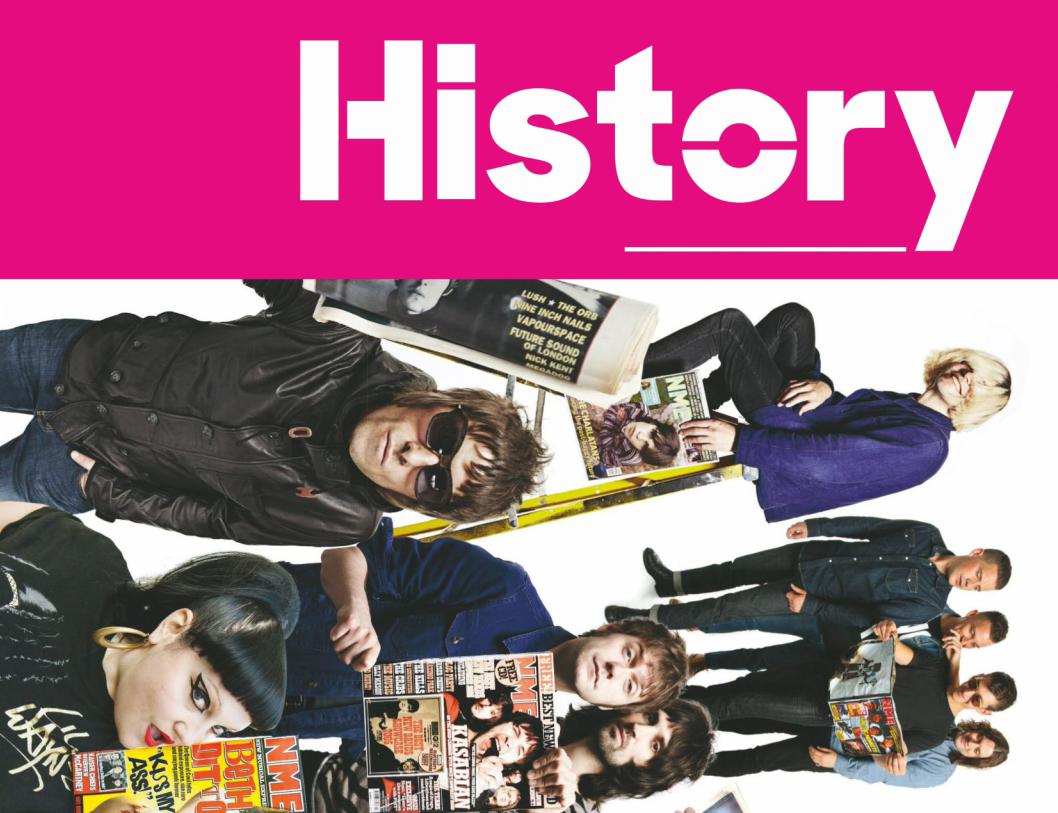
►NME’s first 63 years in six pages

A brief history of
In its 63 years on the newsstands, NME has intertwined with the history of rock’n’roll more intimately and exhaustively than any other publication. As we prepare to make a bold leap into the future, Barry Nicolson takes a look back at six and a half turbulent decades reporting from the front line of popular music
ED MILES, AMY BRAMMALL, PAMELA LITTKY, |
RICHARD JOHNSON |
DEAN CHALKLEY, |
ANDY WILLSHER, |
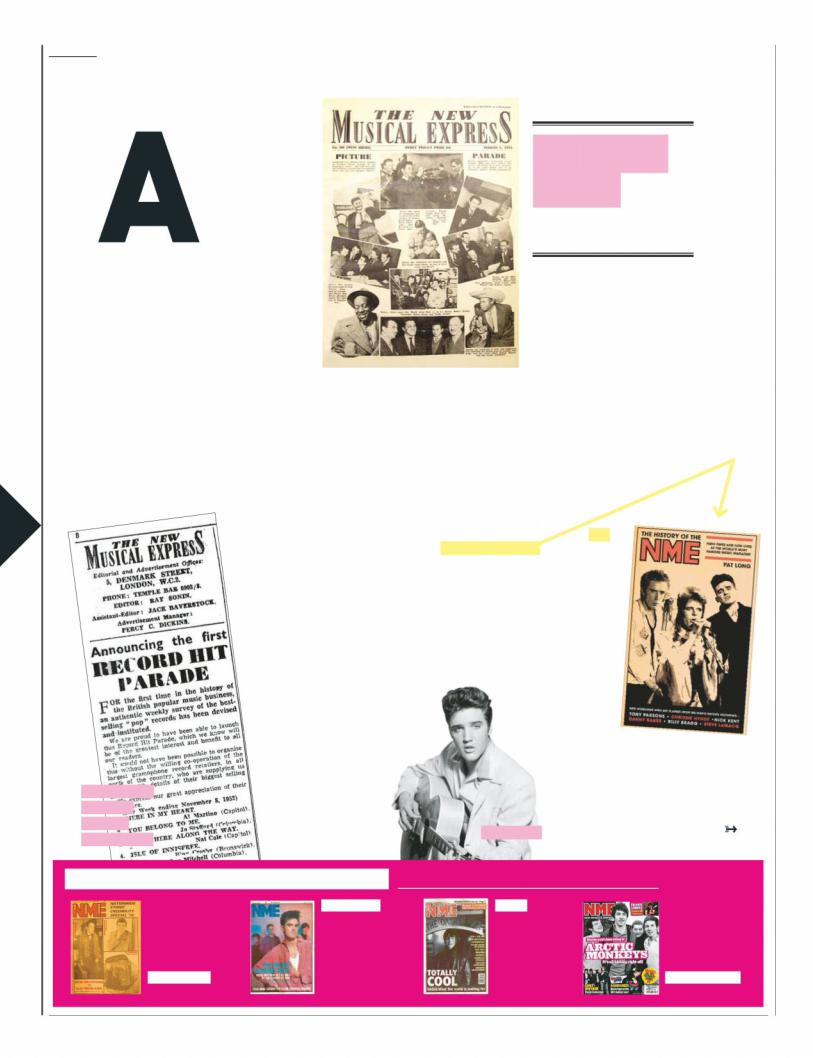
HISTORY
8
s any writer who’s ever refereed the letters page will tell you, nothing boils the blood of NME readers quite like a list. Of what, it hardly matters; music fans rarely
need an excuse to vent over the arbitrary and subjective. So it’s fitting that it was an act of list-making which first put The New Musical Express – the mongrel o spring of
a 1946 merger between two ailing music publications, the Accordion Times and the Musical Express – on the map.
In 1952, with the Musical Express (they’d long since dropped the Accordion Times bit) just minutes away from going into receivership, London music promoter Maurice Kinn agreed to buy the paper for the sum of £1,000. On the cover of its final issue, he promised readers that its new guise would be, “fresh and stimulating, because The New Musical Express will be produced by a brand-new, handpicked sta of editorial experts with long experience in music journalism”.
Sure enough, The New Musical Express
– whose first issue was dated March 7, 1952 – had a vibrant, lively tone
which distinguished it from the dryer, dourer style of its main competitor, Melody Maker (a rivalry which would continue for the next 50 years). The paper continued to struggle for its first eight months, however, until Kinn – following the lead of the US trade magazine Billboard – decided to publish a weekly rundown of the best-selling releases in the record shops of London. Topping sales
on that first week of November 8, 1952 was American crooner
Al Martino with ‘Here In My Heart’ and, 3,272 weeks later, Kinn’s editorial gimmick lives on as the UK singles chart.
At a time when a song’s popularity was still measured by the sales of its sheet music, Kinn
March 7, 1952
NME’s first issue hits the newsstands
and Percy Dickins, his second-in- command, had been far-sighted enough to predict the phonograph record’s explosion in popularity, and within a few short weeks of the chart’s introduction, NME saw a 50 per cent rise in circulation.
What they couldn’t have foreseen, however, was the e ect the chart would have on the course of British music and, ultimately, of the magazine itself.
The 1950s were the age of the teenager, and of a new kind of music made for, and often by, them: rock’n’roll. While the jazz-minded Melody Maker adopted a generally dismissive view of rock’n’roll, seeing it as a strange American fad that would inevitably pass, NME looked at their singles chart and saw a fast-growing niche not being
catered for by anyone else. In The History Of The NME, his superlative chronicle of the title’s first 50 years, former sta er Pat Long writes that, “by the autumn of 1956, the paper was full of pieces on Fats Domino, Elvis, Bill Haley, Carl Perkins, Gene Vincent and the 13-year-old Frankie Lymon. Reading these interviews with wonder were hundreds of
the children – among them John Lennon, Malcolm McLaren and Marc Bolan – who would later shape British
pop music”. It was
an early example of the almost symbiotic relationship NME has, at various points throughout
its history, enjoyed with the musicians featured in its pages.
Yet precisely because of that relationship, the paper’s fortunes
DO YOU REMEMBER THE FIRST TIME? Major stars’ first appearance on the NME cover
►Fleetwood Mac |
►The Smiths |
►Oasis |
►The White Stripes |
January 24, 1970 |
February 4, 1984 |
June 4, 1994 |
August 11, 2001 |
►David Bowie |
►The Stone Roses |
►Muse |
►The Libertines |
July 15, 1972 |
November 18, 1989 |
November 30, 2000 |
June 8, 2002 |
►Joy Division |
►Blur |
►The Strokes |
►Arctic Monkeys |
January 13, 1979 |
July 20, 1991 |
June 9, 2001 |
October 29, 2005 |
MICK HUTSON/GETTY, |
DEAN CHALKLEY |
ESTATTE OF KEITH MORRIS/GETTY, |
KEVIN CUMMINS, ANTON CORBIJN, |
MICHAEL OCHS/GETTY, GETTY, |
CORBIS, SUZIE GIBBONS/GETTY, |
NEW MUSICAL EXPRESS | 1 AUGUST 2015
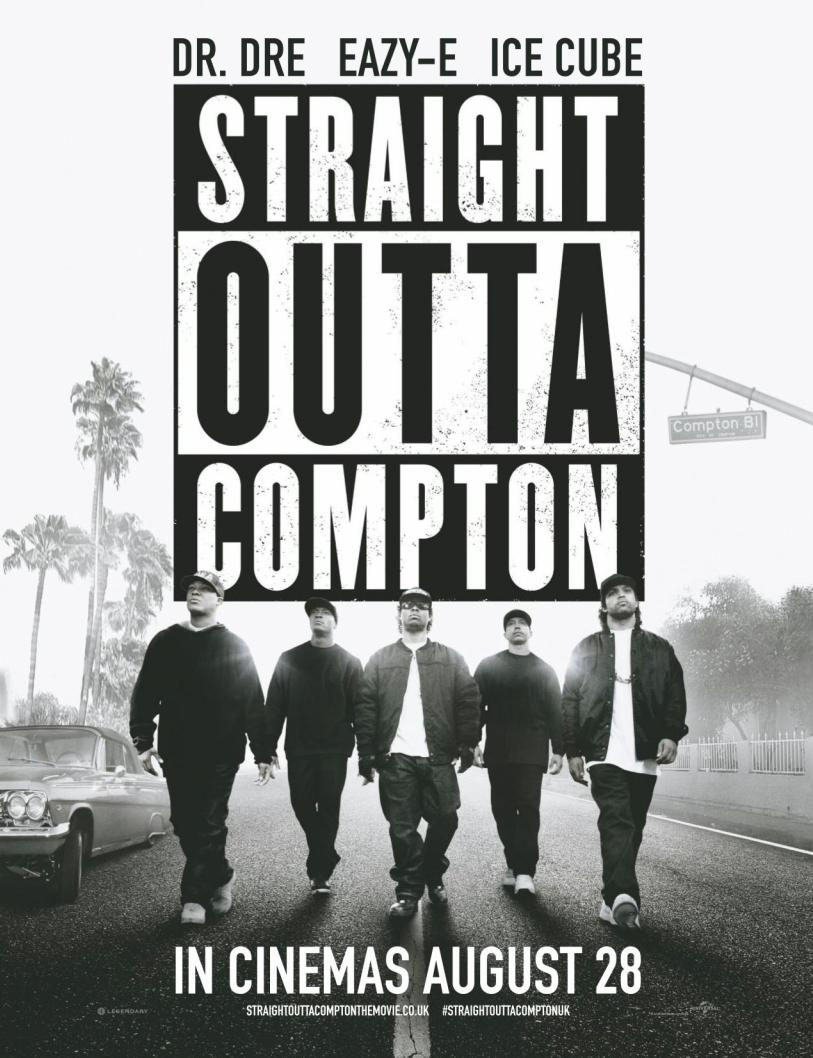

10
PAT POPE, JIMMY KING, MIKE DIVER, ED MILES, ANDY WILLSHER, PIETER M VAN HATTEM
HISTORY
have always been tied to the strength of the scenes it reports on, and at the dawn of the 1960s, with the rock’n’roll craze seemingly at an end and the British pop charts barren, NME’s sales dwindled once more. In 1962, Maurice Kinn finally decided to o oad the paper to media magnate Cecil Harmsworth King’s newlyformed International Publishing Company (or IPC) for £500,000, though one of the stipulations of the deal was that Kinn could stay on as Executive Director. The sale was a decision Kinn would come to regret almost as soon as a Liverpool-based stringer (and future NME Editor) named Alan Smith wrote the words, “Things are beginning to move for The Beatles...” in early 1963.
The Beatles gave NME the first of its many second winds. They were a cultural phenomenon the likes of which had never been seen, but they were also right on NME’s doorstep, and far more accessible than the American rock’n’roll artists the paper had previously thrived by covering. NME fostered a close relationship with the band, who played the inaugural Poll Winners’ Party in 1963, and every year after that until 1966, where their 15-minute set at the Wembley Empire Pool marked their final appearance on a British stage. Meanwhile, as London started to swing, NME writers began moving in the social circles of bands like The Rolling Stones (another Poll Winners’ Party fixture), The Who and The Kinks, ensuring the paper became the newsiest and best connected of the music weeklies.
As those bands pushed pop music into ever-more adventurous and sophisticated territory, however, rock
NME writers Charles Shaar Murray
(left) and Nick Kent (far right) with
John Cooper Clarke in 1978
THE BEATLES WERE A CULTURAL PHENOMENON… THEY WERE ALSO ON NME’S DOORSTEP
journalism struggled to keep up. Music was becoming more expressive, more meaningful and more and more important to the young people who consumed it, but the house style imposed at executive level meant that NME was writing about Bob Dylan and Jimi Hendrix in the same glib tone we’d used for Cli Richard.
The weekly charts continued to dictate the paper’s direction, and as tension grew between the younger sta ers and the middle-aged editorial team, NME began to seem quaint, archaic and out of step.
Once again, NME entered the new decade in a perilous position and, in late 1971, Alan Smith was installed as Editor and given three months to turn the paper’s fortunes around before IPC wound it up for good. But Smith would do more than that: he would hire an entirely new sta and embark upon a root-and- branch reinvention. “We’re happy to stick pretension where it belongs,” he told readers in his first issue. “Simply, NME will be an intelligent weekly paper for music people who rate Beefheart, but don’t necessarily slam Bolan.”
Two of the new writers Smith hired – Charles Shaar Murray and Nick Kent – were integral to NME’s transformation from a failing title on the verge of closure to the most successful one in the IPC stable.
COVER STARS The artists who’ve graced the front of NME the most
MOST NME 7 COVERSIN A YEAR
|
|
|
|
|
It’s a tie between |
|
|
|
|
|
T Rex (1972) and |
Liam and Noel |
David Bowie |
Damon Albarn |
Arctic Monkeys |
Manic Street |
Oasis (2002) |
The Strokes and Julian |
|||||
Gallagher 78 |
32 |
and Blur 30 |
29 |
Preachers 25 |
Casablancas 23 |
NEW MUSICAL EXPRESS | 1 AUGUST 2015
